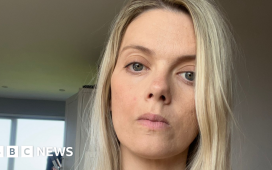Is it possible to become addicted to fertility treatment? When does spending tens of thousands of pounds on IVF with no guarantee that it will actually work become a gambling problem? These are the questions I am searching for answers to as I meet virtually with a doctor from a top London fertility clinic. “Women are a mystery,” he jokes. I smile politely into the tiny camera on my laptop. I had been considering treatment with his clinic and we have spent the last hour running through my history of infertility, or rather, in my case, incomplete fertility.
My husband and I have been trying for nine years to have a baby. I’m quite good at getting pregnant, especially when we first started trying, but I can’t seem to stay pregnant. I don’t know why. And as it turns out, neither do the experts. I have spent years seeking their help, and because IVF wasn’t available on the NHS in my area, I have paid thousands of pounds along the way in my relentless pursuit of pregnancy.
IVF can be an invaluable blessing, and I know so many people who have benefited from the treatment. But there are no guarantees. Despite the tremendous costs associated with private IVF treatment, according to the Human Fertilisation and Embryology Authority, the average live birth rate for IVF patients under 35 is around 32% per embryo transferred. For patients older than 35, the stats decrease significantly by age. Those are pretty bad odds for success, but like thousands of women in the UK, I tried my luck.
Early in our journey, we were labelled as a case of “unexplained infertility”. And while that sounds as if it should be an anomaly, in reality at least 25% of infertility cases in the UK today are classified as unexplained, a mystery.

For me, “unexplained” is the worst diagnosis of all. If I had one of the common causes of infertility, such as polycystic ovaries, irregular periods or endometriosis, or if my husband had a male infertility factor, we could target the problem and treat it.
But after all the tests – and we’ve had them all – we are painfully, extraordinarily, normal.
One clinic was honest in its assessment that it could not identify why our pregnancies wouldn’t last, and advised me not to continue the physical burden of IVF. It refunded us part of the cost when its treatments weren’t successful.
Others were not so kind. Treatment at the most expensive clinic I went to, a Harley Street stalwart, left me physically bruised, financially depleted and none the wiser. My final interaction with them was a 15-minute consultation, weeks after my failed cycle, in which the doctor shuffled through my papers and said: “It should have worked, we did everything right. Try again.”
And so, I did.
But after further unsuccessful cycles, I started to realise that IVF treatment is more art than science. My experience was that IVF is experimental, each clinic offering different cocktails of medicines, treatment plans and “add-ons”.
I tried every option available to me. Cycle after cycle, I gained weight, lost control of my moods, and for years I was anchored in a constant state of grief. But the urge to keep trying refused to disappear.
Despite my efforts not to fall for the promise of IVF again, curiosity and temptation got the better of me. Maybe another clinic could help? Maybe it could offer something new, something different, that the others couldn’t?
And so, I found myself speaking to this new doctor on my laptop. “You are too young and too healthy to give up,” he said. He suggested a strategy and a three-cycle package for us to consider. And so I tried again. I was meticulous in execution but despite our “excellent” graded embryos and my healthy uterus, the cycles failed.
It was a painful reminder that this is how the fertility business works. I could be tempted to pay thousands to treat an undiagnosed condition. A schedule of appointments, injections and procedures could offer me a comforting, yet false, sense of control in an otherwise bewildering experience.
IVF clinics are a business first and foremost, and the private fertility industry in the UK alone is worth more than £320m annually. The model relies on patients like me trying, failing, then paying to try again. And again. And again. Until it works. Maybe.
It’s not just the private clinics. Beyond sparse regulation, the booming fertility market is a free-for-all, crowded with pseudoscientific products aimed at desperate women. Ovulation kits, fertility smoothies, maca powder, royal jelly, prenatal supplements, acupuncture, massages, coaches and countless pricey pregnancy tests – I’ve paid for them all.
It’s irresistible when the one thing they sell above all else is hope.
It took me nearly a decade, but I realised that IVF works for the lucky few, and I wasn’t one of them. And so, I finally quit. I conceded that the toll it was taking on my body and my mental health was not worth it. I had vanished. My identity, my time, the light inside of me, all diminished. I decided I needed to regain control of my body.
I am considered a case of “unexplained infertility” because there are gaping holes in the scientific understanding of how life is created, why miscarriage happens and why some of us struggle to conceive, even in the best of circumstances. My doctor was right, women’s health is still too often shrouded in mystery.
It’s fair to say that my IVF days are over. But I won’t give up hope of having a healthy baby one day. I also hope to see change in the fertility industry. I hope that assisted fertility becomes a less traumatic experience for patients; that more regulation is put in place to curb the ever-rising costs of treatment, and that “success rates” are calculated on personalised data based on patient diagnosis. I also hope for fairer marketing practices that would allow patients to make more informed choices, and for continued research to develop treatments with more promising success rates. Above all, I hope that society wakes up to this silent crisis in women’s health happening all around us.










